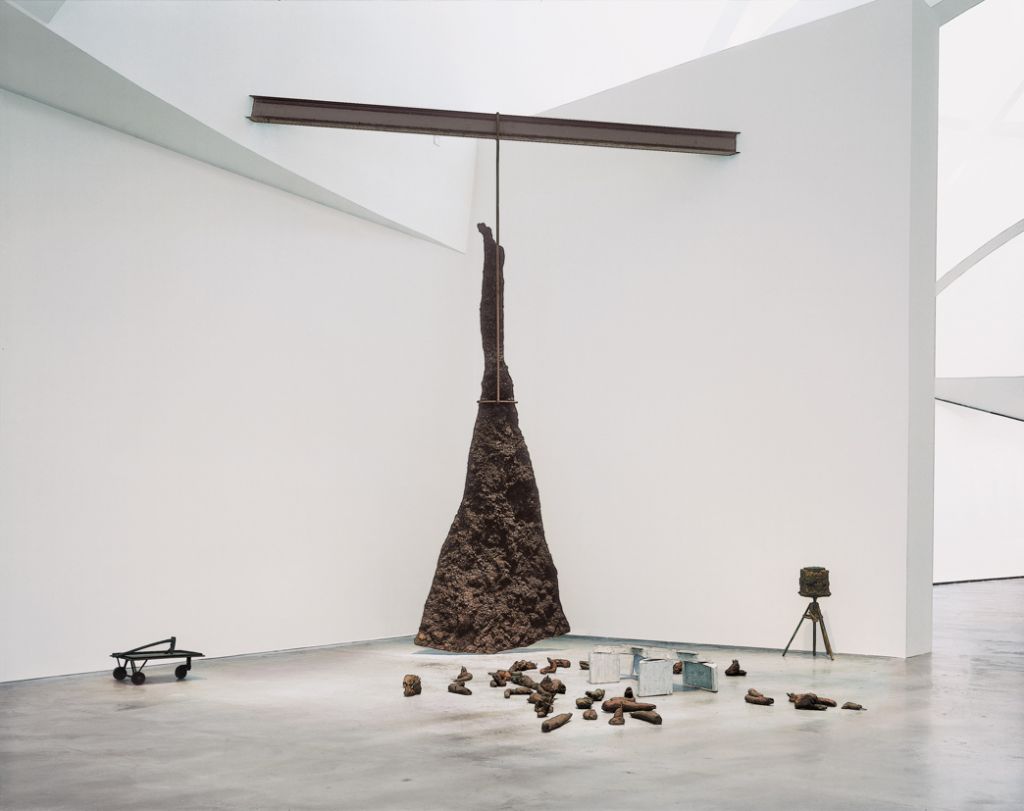One Hundred and Fifty Multicolored Marilyns
1979Acrylic and silkscreen ink on canvas201 x 1,055 x 6 cm
Andy Warhol announced his disengagement from the process of aesthetic creation in 1963: "I think somebody should be able to do all of my paintings for me," he told the critic Gene R. Swenson. He thus distanced himself from the mythic role assigned the Abstract Expressionist artist, whose spontaneous gestural application of paint on canvas was seen as an expression of the artist's spiritual aspiration and incisive poetic vision. Like other Pop artists, Warhol aligned himself with the signs of contemporary mass culture. He used found printed images from newspapers, publicity stills, and advertisements as his subject matter and adopted silkscreening, a technique of mechanical reproduction, as his medium. His embrace of subjects traditionally considered outside the realm of fine art-from celebrity worship to food labels—has been interpreted as both an exuberant affirmation of American culture and an uncritical espousal of the "low."
In his Retrospectives and Reversals of the late 1970s, Warhol took up as his subject his own earlier artworks, resurrecting many of the most well-known silkscreened images of his Pop period-Campbell's soup cans, Elvis, cows, the Mona Lisa—and combining them or reversing their colors to produce negative images. More than 10 meters across, One Hundred and Fifty Multicolored Marilyns is one of the largest of these works and features one of the artist's best-known celebrity subjects. Marilyn Monroe had first appeared in Warhol's work in 1962, the year of the actress's death; that year alone, he had made numerous silkscreened paintings using the same iconic photograph of the doomed starlet, with her lips parted and eyes appearing seductively heavy-lidded, in different configurations, from a single image set on a gold field (Gold Marilyn), to a diptych, to a grid of 25 Marilyns. The quantity of repetition in One Hundred and Fifty Multicolored Marilyns expresses most clearly the potentially unlimited replication of this—or any—image. At the same time, the reversed images have a haunting, ghostlike quality, lending this painting a mood of retrospection that is characteristic of much of the artist's late work, from his shadow paintings to his self-portraits and skulls.
Original title
One Hundred and Fifty Multicolored Marilyns
Date
1979
Medium/Materials
Acrylic and silkscreen ink on canvas
Dimensions
201 x 1,055 x 6 cm
Credit line
Guggenheim Bilbao Museoa
Resources
Perspectives
One Hundred and Fifty Multicolored Marilyns, by Andy Warhol
Fashion designer Alejandro Gómez Palomo and curator Lekha Hileman Waitoller discuss the relationships between fashion and pop art as they unveil the secrets of One Hundred and Fifty Multicolored Marilyns (1979), one of Andy Warhol’s most iconic works.






